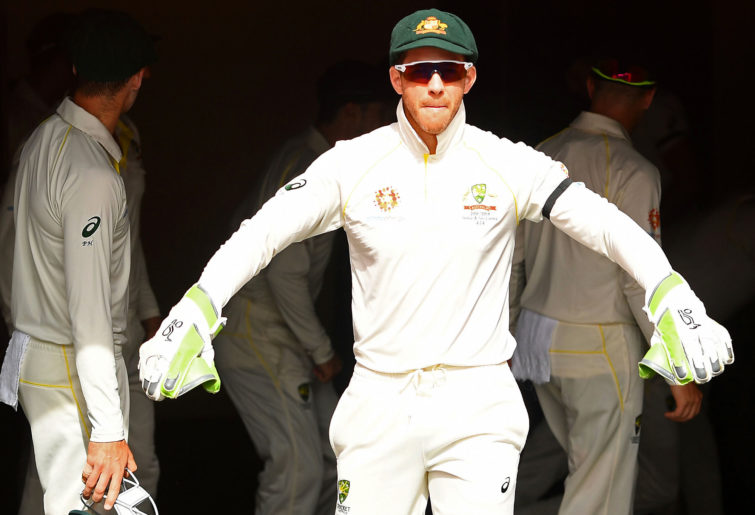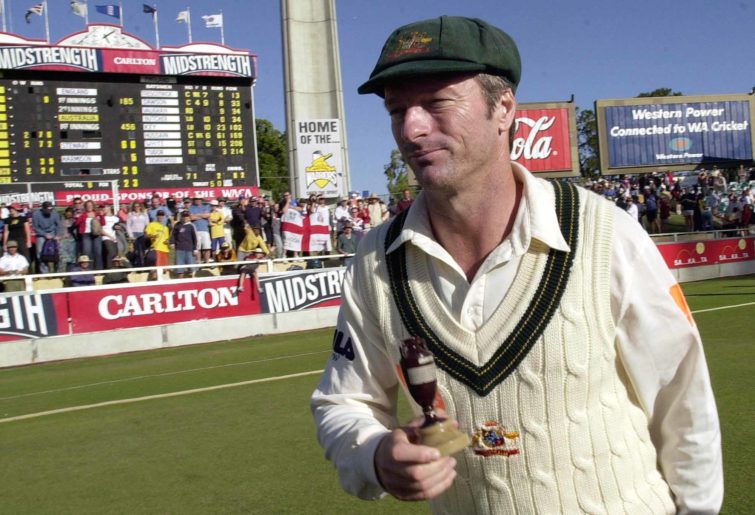I’m not one to quote former Australian Prime Minister John Howard. But he once said he had the second most important job in Australia with the insinuation being that the Australian cricket captaincy was that most important job.
The arrival of Tim Paine into the role marked the 46th Australian cricketer captaining the Test team. In recent times we’ve seen different leadership styles from our captains. Since the 1980s our men’s national team captains have been predominately batsmen.
Taking on the captaincy brings a list of additional, challenging and ultimately defining responsibilities. Managing what happens on the field, applying decisions and tactics, keeping up team spirit and energy plus dealing with media comprise of a daunting job description.
The need to set an example and be a role model also creates pressure. I recall the press conference given by Kim Hughes in 1985. Hughes announced his resignation from the job in a few moments that exposed the emotional wear and tear of the role.
Looking like a broken man, Hughes was unable to finish reading his prepared statement to journalists, leaving the room in tears.

Tim Paine. (Photo by Quinn Rooney/Getty Images)
We’ve witnessed differing ways of leading teams by a range of captains since the 1980s. From the ‘Captain Cranky; tag given to Allan Border to the pressure tactics of Steve Waugh, through to the stand-up comedy worthy banter of Tim Paine, we’ve seen diverse techniques and personalities. And that’s before we examine the leadership styles of visiting captains.
The quiet encouragement given by Jimmy Adams to his West Indian team, the stoic presence of England’s Michael Atherton, the lead by example from New Zealander Kane Williamson and the captaincy of Graeme Smith as a 22 year old, in charge of South Africa, referred to as ‘the bully’ by his peers.
So how have Australia’s Test team captains made the job their own? Allan Border will largely be remembered for his tough and gritty batting, frequently at the crease for rescue missions in the early stages of his captaincy. His chastising of Craig McDermott revealed Border was unafraid in walking up to problems.
McDermott was an important strike bowler but was put in his place by Border more than any batsman was able to. Border called across the field “You do that again mate, and you’ll be on the next plane home.” Followed by ‘You test me mate and we’ll see.’
Border was followed by Mark Taylor, an insightful and thoughtful captain who believed communication, especially listening, was critical to the job. Taylor was especially challenged by a loss of form through 1996-97 but carried on as leader with a belief that cricket was not a life and death matter.
Captain Steve Waugh presented an image that became deeply familiar to cricket watchers. His disintegrating baggy green cap seemed to illustrate his toughness. Waugh famously said sledging was ‘mental disintegration’ and it was a technique he used, virtually plotting a course for his opposition that led from defeat to self-doubt to eventual capitulation.

Australian captain Steve Waugh looks over the moon to have retained the Ashes. (AP Photo/Rick Rycroft)
Waugh didn’t captain a side to merely lead, his goal was to intimidate.
Ricky Ponting inherited the captaincy role from Steve Waugh. Whilst he took on a team that had performed brilliantly, the inevitable retirements began and the team became challenged to maintain form. Ponting began to be criticised for fielding placements, morale of the side and his own batting performance.
Despite that, Justin Langer commented ‘He is quite inspirational as a leader and I just never get all the detractors he has. Whether it’s in the fielding practice, the nets, the way he holds himself off the field, every time he speaks, these young guys just listen, they hang on every word he says.’
After Ponting’s departure Michael Clarke took the helm. Clarke could be innovative, for example perfecting a tactic of bringing on spinner Nathan Lyon with a relatively new ball, exploiting Lyon’s enjoyment of bowling with a harder ball. Speaking on 60 Minutes, Clarke conceded he wasn’t an effective vice-captain to Ricky Ponting and said he’d had no aspirations for the top job.
Clarke’s career as cricket captain was dogged by media obsession with his relationship to Laura Bingle, including stories he’d thrown her engagement ring down a toilet. There were rumours he chose to eat dinners away from the team. Spats with Shane Watson and Simon Katich all over shadowed his leadership credibility.
Despite that, the true measure of Michael Clarke may well be the vulnerability and compassion he revealed following the death of Phillip Hughes.

Michael Clarke of Australia (Photo by Mark Nolan/Getty Images)
The story of Steve Smith’s captaincy may be an unfinished one, depending on whether he one day returns to the job. Smith was considered innovative in the leadership role, drawing inspiration from his batting.
Whatever will be said about Steve Smith as captain, his involvement and resulting suspension following Cameron Bancroft’s use of sandpaper in South Africa will always be written in the margins.
Which brings us to current captain Tim Paine. Paine’s approach to the cricket captaincy meshes nicely with coach Justin Langer’s values and style. Paine brings approachability, warmth, humour and a considered outlook to the game.
Initially considered as possibly a caretaker only, Paine has grown into the job with presence and authority. As a wicketkeeper Paine must concentrate on every ball, a relentless demand when the opposition bats.
Yet, as captain, he has to cast a wider view over the game, setting and reviewing strategies with his coach, directing the field and rotating bowlers. Paine carries all this out with a blend of toughness and calm.
When we consider leadership we think of managing directors, activists, scientists, some politicians and visionaries. Like those people our cricket captains experience periods of triumph and failure, at times inspiring or disappointing us.
Whenever an Ashes urn or a cup is held aloft, you can be sure the captain has worked, agonised, celebrated and above all led in their own individual style on their way to that moment.
































































































